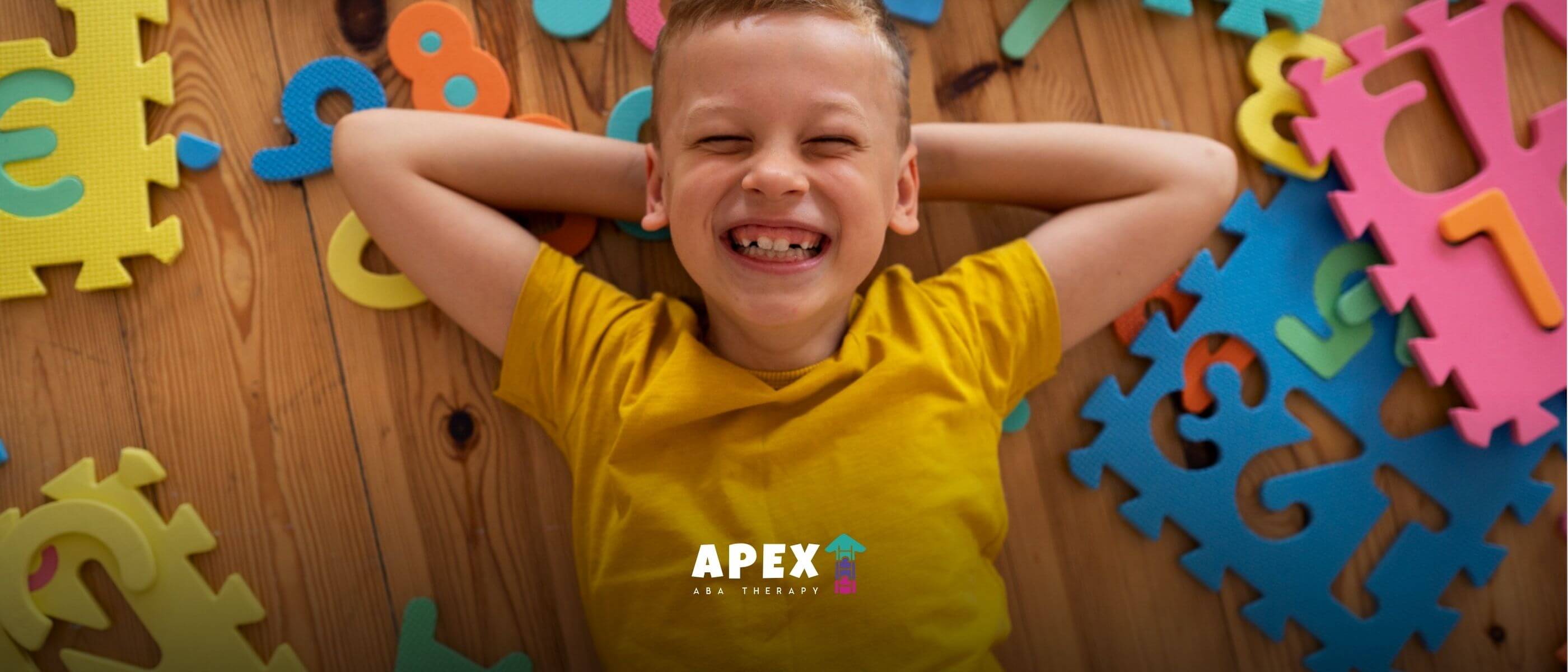Nonverbal Autism: Definition and Signs
Nonverbal autism is a term used to describe individuals on the autism spectrum who have limited or no speech development. These individuals may have difficulty using spoken language to express their needs, thoughts, and emotions.
.jpg)
Nonverbal Autism: Definition and Signs
Understanding Nonverbal Autism
When discussing autism, it's important to acknowledge that not all individuals on the autism spectrum have the same communication abilities. Nonverbal autism refers to a specific subset of individuals who experience challenges with spoken language and may rely on alternative forms of communication. Let's explore what nonverbal autism is and the unique communication challenges it presents.

What is Nonverbal Autism?
Nonverbal autism is a term used to describe individuals on the autism spectrum who have limited or no speech development. These individuals may have difficulty using spoken language to express their needs, thoughts, and emotions.
It's important to note that the absence or limitation of speech does not indicate a lack of intelligence or understanding. People with nonverbal autism often have unique strengths and abilities that may not be immediately apparent.
Nonverbal individuals with autism may rely on other forms of communication, such as gestures, sign language, picture exchange systems, or augmentative and alternative communication (AAC) devices.
AAC devices can range from simple picture boards to sophisticated electronic devices that generate speech. These communication methods help bridge the gap and enable nonverbal individuals with autism to express themselves and interact with others.
Unique Communication Challenges
Nonverbal individuals with autism face various challenges in communication. These challenges may manifest in different ways and can vary from person to person. Some common communication difficulties experienced by individuals with nonverbal autism include:
- Limited or Absent Eye Contact: Nonverbal individuals with autism may have difficulty making and maintaining eye contact during social interactions. This can make it challenging for them to engage in reciprocal communication and establish connections with others.
- Difficulty Understanding and Using Gestures: Gestures, such as pointing or waving, play a crucial role in nonverbal communication. However, individuals with nonverbal autism may struggle to understand and use gestures effectively. They may have difficulty interpreting the meaning behind gestures or using them to convey their own intentions.
- Challenges with Facial Expressions and Body Language: Reading and interpreting facial expressions and body language are important aspects of communication. Nonverbal individuals with autism may have difficulty understanding the nuances of facial expressions and body language, which can impact their ability to comprehend social cues and emotions.
- Repetitive and Stereotyped Behaviors: Some individuals with nonverbal autism may engage in repetitive behaviors, such as hand-flapping or rocking. These behaviors may serve as a way to self-regulate or self-soothe but can also interfere with communication by diverting attention away from social interactions.
Understanding the unique communication challenges faced by nonverbal individuals with autism is essential for developing appropriate interventions and support strategies. By recognizing and respecting their preferred methods of communication, we can help create an inclusive and supportive environment.

Nonverbal Autism Symptoms
Nonverbal autism is characterized by challenges in communication and expressive language abilities. Individuals with nonverbal autism may exhibit various symptoms that can provide insights into their unique experiences. Here are some common symptoms associated with nonverbal autism:
Lack of Speech Development
One of the hallmark symptoms of nonverbal autism is a lack of speech development. Children and adults with nonverbal autism may have limited or no spoken language abilities. They may struggle to produce recognizable words, phrases, or sentences.
However, it's important to note that the absence of spoken language does not imply a lack of intelligence or understanding. Alternative forms of communication, such as sign language or augmentative and alternative communication (AAC) devices, can be used to support individuals with nonverbal autism.
Limited or Absent Eye Contact
Another symptom commonly observed in nonverbal autism is limited or absent eye contact. Individuals with nonverbal autism may have difficulty establishing or maintaining eye contact during social interactions.
This can make it challenging for them to engage in reciprocal communication and connect with others visually. It's important to remember that this difficulty with eye contact is not indicative of a lack of interest or understanding. Many individuals with nonverbal autism may demonstrate engagement and connection through other nonverbal cues.
Difficulty Understanding and Using Gestures
Individuals with nonverbal autism often experience challenges in understanding and using gestures. Gestures, such as pointing, waving, or nodding, play a crucial role in communication and expressing intentions.
Nonverbal individuals with autism may struggle to comprehend the meaning behind gestures used by others, leading to difficulties in interpreting social cues. Additionally, they may have difficulty using gestures themselves to convey their own needs, desires, or emotions.
Challenges with Facial Expressions and Body Language
Facial expressions and body language are important components of nonverbal communication. Individuals with nonverbal autism may have difficulty interpreting and expressing emotions through facial expressions and body language. This can contribute to challenges in understanding others' emotions and intentions, as well as expressing their own feelings effectively. It's essential to be mindful of these challenges and find alternative ways to support emotional expression and understanding.
Repetitive and Stereotyped Behaviors
Repetitive and stereotyped behaviors are common in individuals with nonverbal autism. These behaviors can manifest in various forms, such as hand-flapping, rocking, spinning objects, or rigid adherence to routines. These repetitive behaviors may serve as self-soothing mechanisms or ways to regulate sensory input. Understanding and accommodating these behaviors can help create a supportive environment for individuals with nonverbal autism.
Recognizing and understanding these symptoms can aid in identifying nonverbal autism and providing appropriate support and interventions. It's important to remember that every individual with nonverbal autism is unique, and symptoms can vary.
Sensory Sensitivities in Nonverbal Autism
Individuals with nonverbal autism often experience unique sensory sensitivities that can significantly impact their daily lives. Understanding and addressing these sensitivities is essential for providing appropriate support and care. Two common sensory sensitivities observed in nonverbal autism are hyper- or hypo-sensitivity to sensory stimuli and unusual responses to sensory input.
Hyper- or Hypo-Sensitivity to Sensory Stimuli
Many individuals with nonverbal autism may exhibit heightened or reduced sensitivity to sensory stimuli. This can manifest in different ways across the various senses, including sight, sound, touch, taste, and smell.
Hyper-sensitivity refers to an increased sensitivity to sensory input. Individuals may find certain sounds, lights, textures, or smells overwhelming and distressing. For example, a loud noise that may not bother others could cause extreme discomfort or anxiety to someone with nonverbal autism.
On the other hand, some individuals may experience hypo-sensitivity, which involves reduced sensitivity to sensory input. They may seek out intense sensory experiences or show little response to stimuli that typically elicit a reaction from others. For instance, they might not respond to pain in the same way or seek out deep pressure sensations.
Understanding an individual's specific sensitivities is crucial for creating a supportive environment that minimizes distress and encourages comfort.
Unusual Responses to Sensory Input
Nonverbal individuals with autism may also display unusual responses to sensory input. These responses can vary widely and may include repetitive or self-stimulatory behaviors, such as hand flapping, rocking, or spinning. These behaviors serve as a way to self-regulate and manage sensory input.
Some individuals may engage in sensory-seeking behaviors, actively seeking out certain sensory experiences to fulfill their sensory needs. For example, they may seek out deep pressure by pressing against objects or seek out certain textures for tactile stimulation.
Conversely, others may engage in sensory avoidance behaviors, actively avoiding or withdrawing from sensory input that they find overwhelming or uncomfortable. This may include covering their ears to block out loud noises or avoiding crowded places with excessive sensory stimulation.
Understanding and accepting these unusual responses to sensory input is important in providing appropriate support and accommodations for individuals with nonverbal autism.
By recognizing and addressing sensory sensitivities, caregivers and professionals can tailor interventions and create a sensory-friendly environment that supports the unique needs of individuals with nonverbal autism.
Social Interaction Difficulties
Individuals with nonverbal autism often face challenges in social interactions. These difficulties can manifest in various ways, including difficulty initiating and responding to social interactions, lack of social imagination and pretend play, and challenges with joint attention and turn-taking.
Difficulty Initiating and Responding to Social Interactions
One of the key symptoms of nonverbal autism is the struggle to initiate and respond to social interactions. Individuals may find it challenging to initiate conversations, greet others, or engage in small talk.
They may also have difficulty understanding social cues, such as when it is their turn to speak or when to appropriately enter a conversation. These difficulties can lead to social isolation and a sense of disconnect from others.
Lack of Social Imagination and Pretend Play
Nonverbal individuals with autism often have limited social imagination and struggle with pretend play. They may have difficulty understanding and engaging in imaginative play scenarios, such as pretending to be a character or acting out fictional situations. This can make it challenging for them to participate in imaginative play with peers and may affect their ability to engage in collaborative and interactive play.
Challenges with Joint Attention and Turn-Taking
Joint attention, which involves sharing attention with others and focusing on the same object or event, can be particularly challenging for individuals with nonverbal autism.
They may have difficulty understanding and maintaining joint attention, making it harder for them to engage in shared activities or follow social cues. Turn-taking in conversations or games can also be challenging, as individuals may struggle to recognize when it is their turn to speak or take an action.
To support individuals with nonverbal autism in their social interactions, it is important to provide appropriate interventions and strategies. These may include enhancing communication and expression, creating a sensory-friendly environment, and promoting social interaction and engagement.
Understanding and addressing the social interaction difficulties faced by individuals with nonverbal autism is essential for their overall well-being and quality of life. By implementing appropriate interventions and providing a supportive environment, we can help individuals with nonverbal autism navigate social interactions more effectively and foster meaningful connections with others.

Strategies for Supporting Nonverbal Individuals with Autism
Supporting individuals with nonverbal autism requires a comprehensive approach that addresses their unique communication and sensory needs. By implementing strategies that enhance communication and expression, create a sensory-friendly environment, and promote social interaction and engagement, we can help individuals with nonverbal autism thrive.
Enhancing Communication and Expression
Communication is key when it comes to supporting individuals with nonverbal autism. While they may have limited or no speech, there are various alternative communication methods that can be used to enhance their ability to express themselves. These may include:
- Augmentative and Alternative Communication (AAC) Systems: AAC systems such as picture exchange communication systems (PECS), sign language, or speech-generating devices can provide individuals with nonverbal autism with a means to communicate their thoughts, needs, and preferences.
- Visual Supports: Visual supports, such as visual schedules, social stories, and visual aids, can help individuals with nonverbal autism understand and navigate their daily routines, expectations, and social situations.
- Multi-sensory Approaches: Incorporating multi-sensory approaches, such as using visual cues, gestures, and touch cues, can enhance understanding and communication for individuals with nonverbal autism.
It's essential to work closely with speech-language pathologists, educators, and behavioral therapists to develop and implement individualized communication strategies based on the specific needs and abilities of each individual.
Creating a Sensory-Friendly Environment
Sensory sensitivities are common among individuals with nonverbal autism. Creating a sensory-friendly environment can help reduce sensory overload and support their overall well-being. Consider the following strategies:
- Sensory Modifications: Make modifications to the environment to minimize sensory stimuli, such as reducing bright lights, using noise-cancelling headphones, and providing a quiet space for individuals to retreat to when feeling overwhelmed.
- Structured Routine: Establishing a predictable and structured routine can provide individuals with nonverbal autism a sense of security and help them anticipate and prepare for daily activities.
- Sensory Integration Activities: Engage individuals with nonverbal autism in sensory integration activities, such as deep pressure activities, sensory breaks, or sensory bins, to help regulate their sensory system and promote self-regulation.
By understanding and addressing the unique sensory needs of individuals with nonverbal autism, we can create a supportive environment that allows them to thrive and participate more fully in daily activities.
Promoting Social Interaction and Engagement
Social interaction can be challenging for individuals with nonverbal autism, but it's crucial for their overall well-being and development. Here are some strategies to promote social interaction and engagement:
- Social Skills Training: Provide individuals with nonverbal autism with social skills training to help them understand and navigate social situations. This may include teaching turn-taking, joint attention, and recognizing facial expressions and body language.
- Peer Modeling and Peer Support: Encourage interactions with peers who can serve as role models and provide support. Peer modeling can help individuals with nonverbal autism learn appropriate social behaviors and develop meaningful connections.
- Inclusive Activities: Foster inclusive environments that promote social interaction among individuals with and without autism. This can be achieved through inclusive classrooms, community programs, and recreational activities.
By implementing these strategies, we can help individuals with nonverbal autism develop their social skills, build connections with others, and experience a sense of belonging.
Supporting individuals with nonverbal autism requires a collaborative and individualized approach. By enhancing communication and expression, creating a sensory-friendly environment, and promoting social interaction and engagement, we can provide the necessary support for individuals with nonverbal autism to thrive and reach their full potential.
Sources
- https://www.verywellhealth.com/what-is-nonverbal-autism
- https://www.healthline.com/health/autism/nonverbal-autism
- https://psychcentral.com/autism/autism-nonverbal
- https://www.medicalnewstoday.com/articles/non-verbal-autism
- https://www.autismspeaks.org/expert-opinion/help-your-child-nonverbal-autism-speak
Frequently Asked Questions

How to Teach Kitchen Safety to Autistic Children: A Parent’s Guide
Teaching kitchen safety to autistic children is easier with the right strategies. Learn step-by-step tips to create a safe environment and build essential skills.

How to Manage Attention-Seeking Behaviors in a Positive, Supportive Wayr
Learn how to reduce attention-seeking behaviors in children using positive reinforcement, clear boundaries, and communication skills. Find helpful strategies here.

Can Play Therapy and ABA Therapy Work Together to Help Your Child?
Combining play therapy with ABA therapy offers a powerful way to enhance your child’s growth. Find out how these therapies work together for lasting benefits.



